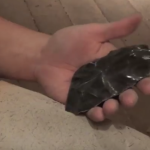
Learning the basics of the lunar cycle can get you in tune with the rhythm of life that may become a reality if and when the SHTF. One the main reasons that the moon is such a reliable source of time measurement is that each phase is distinctive and easily identifiable. Let’s take a look at the basic phases and see how they can help you to measure time, even if it is a little bit differently than what we do with our current calendars.
The moon completes its orbit around the Earth approximately every 29.5 days. However, the phases of the moon, such as full, quarter or new do not always complete a full cycle in the same amount of time every month. This misconception has led to a lot of confusion from the general public over the years about how to tell time by following the cycle of the moon against our modern calendar.
However, people have measured the passage of time, seasons and marked special occasions by the lunar cycle throughout most of human history. Civilizations planted crops, marked the beginning and end of rainy seasons and essentially used the lunar cycle as a way to establish routines that provided the connective tissue that held society together.
Phases of the Moon
The phases of the moon are divided into numerous categories. We’re more familiar with hearing things like the half, full, crescent, quarter or new moon. However, these can be misleading as the quarter moon is actually the half moon and the new moon is not bright like the full moon. Let’s look at the common terminology that describes the various phases of the moon.
The new moon occurs when its completely dark and turns into the waxing gibbons. This is when a crescent shape forms and the right side of the moon is illuminated. More of the moon continues to get illuminated each day until it reaches the first quarter. The first quarter occurs when the right side of the moon is bright and the left side is dark.
More of the moon will be illuminated as the days pass. The waxing gibbons occurs when the ¾ of the moon is illuminated, with only the left portion darkened. This continues until the full moon. Then the opposite effect happens. The right side of the moon will become increasingly dark as it passes through the ¾ phase again. This phase is called the waning gibbons. The area continues to get darker on the right side until the moon reaches the 3rd quarter, or when the left half of the moon is illuminated. The moon will continue to get darker until it reaches the new moon phase once again.

There are a number of factors that influence the timing of the phases of the moon, and they don’t always match the time that it takes the moon to orbit the Earth. However, it’s easy to jump online and use simple calculators that will tell you when a particular phase will occur at a particular time.
If we were ever thrown into the dark ages, even if it’s only temporary, following the moon could very well be the way we measure time. Learning the phases and adapting the rhythm of our lives to the lunar cycle could become the norm instead of the exception in the future.
You can benefit practically by knowing the lunar cycle today as well. Think about planning a trip into the wilderness when you want to be under the light of a full moon. You can gauge when this will happen by tracking its phases. The same could be applied to planning an activity that requires a black night sky. These are just a couple of examples of the many benefits that learning the lunar cycle can provide.
Take some time to look into the night sky and try to determine the current as well as future stages of the lunar cycle. It’s really easy, can come in handy one day, and you will have fun learning how people used the moon to regulate their lives for thousands and thousands of years.














